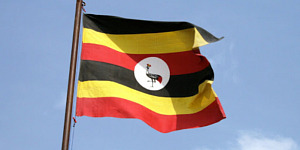Uganda's central bank lowered its Central Bank Rate (CBR) by a further 100 basis points to 10.0 percent, saying continued monetary easing is appropriate as prospects for economic growth remain weak and inflationary pressures are subdued.
The Bank of Uganda (BOU) has now cut its rate by 200 basis points this year following cuts of 50 points in February and April. Since April 2016, when the BOU began its easing cycle, the key rate has been cut by 7 percentage points.
The rate cut "will be consistent with achieving the core inflation target of 5 percent over the medium-term and will also support the recovery of real output in the economy," the BOU said.
Uganda's inflation rate rose to 7.2 percent in May from 6.8 percent in April due to a rise in food prices along with higher energy prices. Food crop inflation accelerated to 23.1 percent from 21.6 percent in April as prolonged drought has led to poor harvests.
But core inflation has remained relatively stable, rising to 5.1 percent in May from 4.9 percent in April, as the "relative stability of the exchange rate and subdued domestic demand have contributed to the dampening of core inflationary pressures over the last 12 months," the central bank said.
The outlook for inflation has not changed substantially since the BOU's previous policy decision in April, with the central bank considering the jump in inflation in the last six months as temporary and expected to wane in the first quarter of the next financial year of 2017/18, which begins July 1.
"In line with the previous forecast, inflation is forecast to stabilize around the target of 5 percent in 12 months," the BOU said.
The fall in food and cash crops from drought, along with slow implementation of public investment projects and weak private sector credit, has hit Uganda's economy, which slowed to growth of 1.4 percent in the final quarter of 2016 from 2.0 percent in the third quarter.
In the full 2016/17 financial year, growth was estimated to have slowed to 3.9 percent, down from 4.7 percent in 2015/16. In February the BOU cut its growth estimate for 2016/17 to 4.5 percent from July's forecast of 5 percent and then in April said 4.5 percent was unlikely to be reached.
In the 2017/18 financial year, the BOU expects an improvement of growth to 5.0 percent, still down from its April forecast of 5.5 percent, as public investments pick up, along with foreign direct investment, particular in the oil sector, and private sector credit recovers as lending rates decline.






































